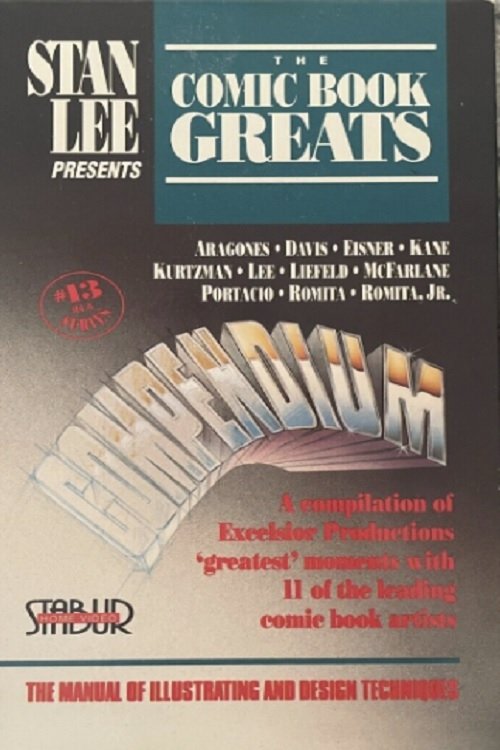
This new documentary film recognizes the comic book as a true art form, as indigenous to American culture as jazz. It presents comic books as reflectors of a changing America from the 1930's to today, and it hails comic book superheroes as modern-day mythological figures. “THE LEGENDS BEHIND THE COMIC BOOKS” captures for posterity the living artists and writers from The Golden Age of Comic Books (1938-1951) and The Silver Age of Comic Books (1956-1973). Insightful comments are provided by the creative geniuses who were there at the beginning, including…

This documentary we learn a little about Marvel Comics in the early Sixties and the development of the Fantastic Four and its characters. We hear about the work of Stan Lee and artist Jack Kirby, the addition of new characters like the Silver Surfer, Kirby's departure from Marvel in 1970 and the influence of other writers and artists on the series, and changes over the decades.

Compendium of Greatest Moments with artists from Comic Book Greats Series
John Victor Romita (/rəˈmiːtə/; January 24, 1930 – June 12, 2023) was an American comic book artist best known for his work on Marvel Comics' The Amazing Spider-Man and co-creating characters including Mary Jane Watson, the Punisher, Kingpin, Wolverine, and Luke Cage. Romita was the father of John Romita Jr., a comic book artist, and the husband of Virginia Romita, who was Marvel's traffic manager for many years. His first comics work was in 1949 as a ghost artist for Timely Comics, the precursor to Marvel, through which Romita met editor-in-chief Stan Lee. In 1951, Romita began drawing horror, war, and romance comics for Atlas Comics (previously Timely) and also drew his first superhero work, a 1950s revival of Captain America. He worked exclusively for DC Comics from 1958 to 1965 and was the artist for many of their romance comics. During these years, Romita further developed his ability to draw beautiful women, for which he later became well-known. Romita joined Marvel in 1965, initially drawing Daredevil comics. In 1966, when Spider-Manartist and co-creator Steve Ditko left Marvel, Romita was chosen by writer Lee as the new artist for Amazing Spider-Man. Within a year of Romita becoming the Spider-Man artist, The Amazing Spider-Man rose from Marvel's second-best-selling title to the company's top-seller. Romita brought a new romance style to Spider-Man comics that soon became the new design for the character. In June 1973, Romita was promoted to Marvel's art director and heavily influenced the look of Marvel comics throughout the 1970s and 1980s. Romita was inducted into the Will Eisner Comic Book Hall of Fame in 2002. Description above from the Wikipedia article John Romita Sr., licensed under CC-BY-SA, full list of contributors on Wikipedia.
By browsing this website, you accept our cookies policy.